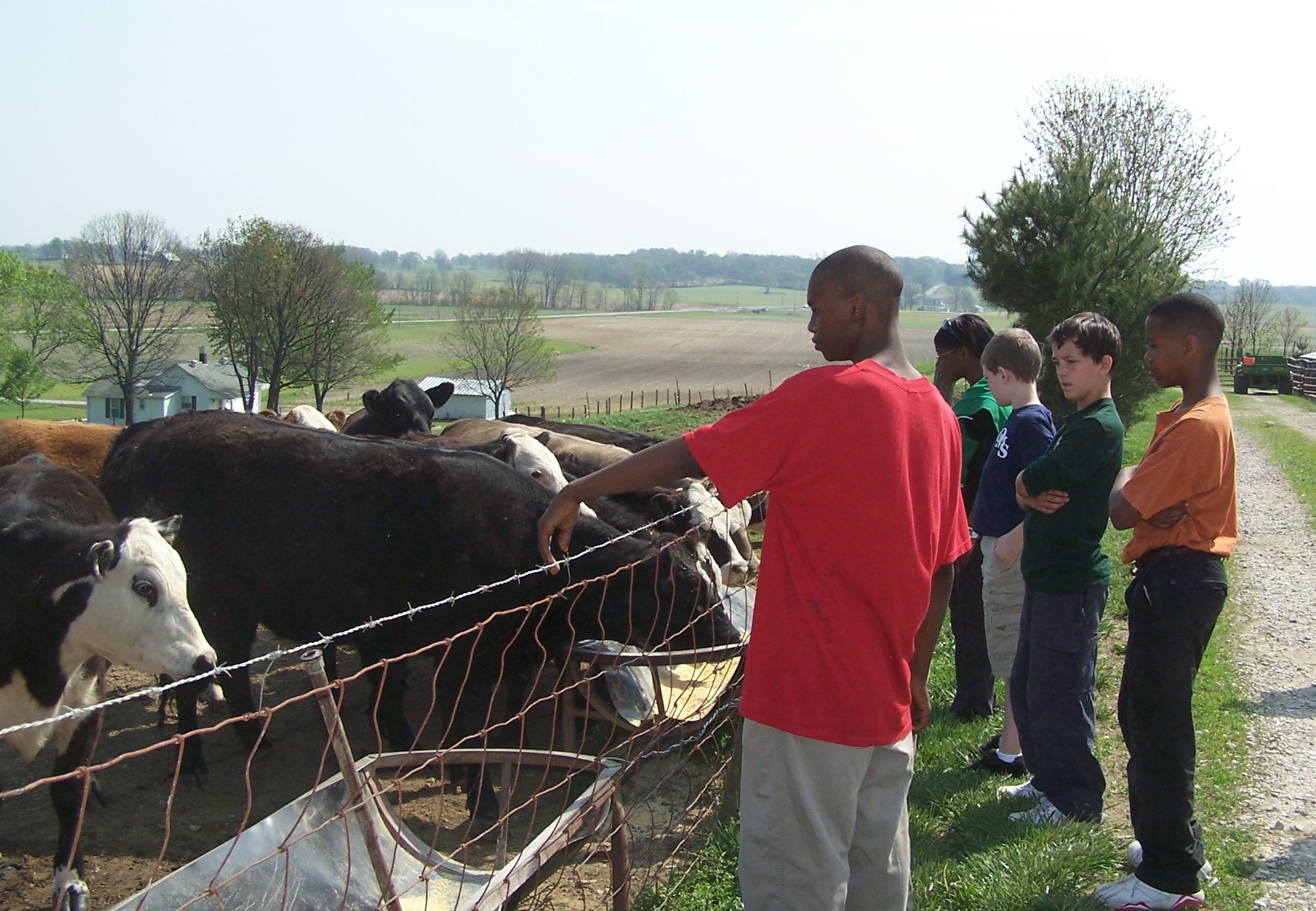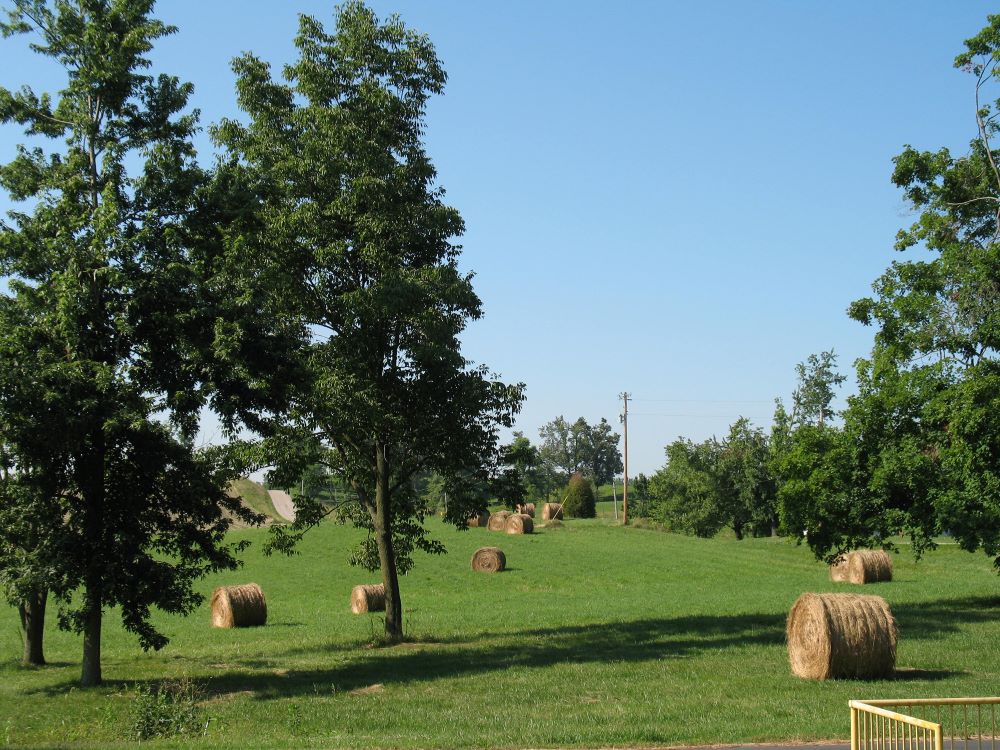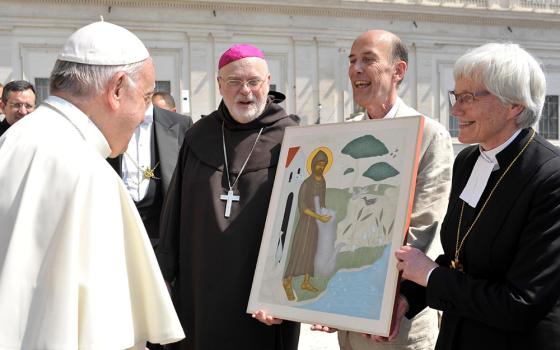Cabbage, a cold weather crop, is one of the first things grown in the garden — after the soil is treated with natural fertilizer from the cows. (Courtesy of Ursuline Sisters of Mount St. Joseph)
Imagine the smell of spring. Where I live now, the fragrance or the aroma — or more bluntly — the smell of spring speaks to me of crops newly planted and natural fertilizers enriching the soil. That smell speaks to me of growth and a partnership with and a nurturing of the soil, the land with which we live.
But it was not always so: I grew up mostly in Houston, Texas, where the fragrance of spring that I knew was the fecund greenness of the bayous, sometimes overpowered by the neighborhood's gardenias. Radishes were something we could plant and might even see grow, along with carrots, in the grass-free dirt that bordered the sidewalk. If we were lucky, we might actually see some greenery and possibly a tiny radish root. But I had never even heard of a "groundhog radish." Have you? Back to that later.
Years later, as an Ursuline Sister of Mount St. Joseph, I had the good fortune to spend time at our motherhouse and working farm in western Kentucky. It was then that I came to recognize, anticipate and appreciate the healthy agricultural fragrance of spring; it was then that I began to be acquainted with sustainable agriculture, a relationship that would take root in my experiences and mission.

Owensboro Middle School students and teachers get acquainted with cows in the pasture at the motherhouse in this 2007 photo. (Courtesy of Ursuline Sisters of Mount St. Joseph)
Now — no surprise — sustainable agriculture is farming in a sustainable way, meeting society’s present food and textile needs without compromising the health of the land for present and future generations. A rich variety of practices contribute to sustainable agriculture, such as hydroponics, crop rotation, terracing, cover crops and no-till farming. Such practices stabilize the land and help prevent erosion, ensure nutrient-rich soil and reduce the need for artificial fertilizers and herbicides. At that time, all these practices were integral to the motherhouse's farm and garden operations. But the Ursuline relationship with sustainable agriculture did not stop there.
Our congregation’s mission reminds us that we proclaim Jesus through education and Christian formation, in the spirit of our founder, St. Angela Merici. Over the years, responding to the educational charge, we more intentionally shared our sustainable practices, both among the farming community and through our conference and retreat center, with students and their teachers.
But our congregation’s commitment to education views education is transformative, both at the individual and societal level. In the light of that understanding, we could no longer be satisfied with just sustainable agriculture. Although we did not know the term at the time, our motherhouse farm managers and gardeners began moving us into the realm of regenerative agriculture, a move that ultimately led to a partnership with a local community college and our own university.

One of the most wasteful uses of land is to use it as lawn, so the lawns on the front campus at Mount St. Joseph are cut as hay, as shown in this July 2009 photo. (Courtesy of Ursuline Sisters of Mount St. Joseph)
Regenerative agriculture refers to farming practices that might, among other benefits, help reverse climate change by rebuilding soil organic matter and restoring degraded soil biodiversity. Regenerative practices include use of cover crops, reduced tilling, crop rotation and use of natural fertilizers. Again, we were pleased to see that this list described our practices at the motherhouse farm.
The Agriculture Department at our local Owensboro Community and Technical College became aware of the model farming practices at our motherhouse. After a series of initiatives and conversations, the OCTC Sustainable Agriculture program partnered with the Ursuline Sisters and our sponsored college, Brescia University, to use portions of the motherhouse farm as a working laboratory for their students. Through this collaboration Brescia University also introduced sustainable agriculture in its school of business, again expanding the outreach and impact of the motherhouse farm's practices.
Advertisement
But what I remember most were the groundhog radishes.
When the OCTC students came to the motherhouse farm, they took over a small marginal hayfield. "What are they going to do with that?" we wondered. Following the scientific best practices, they took soil samples, gathered data and planted groundhog radishes. Groundhog radishes are a cool-season, large broad-leaf plant in the cabbage family. It's used as a fast-growing, very beneficial cover crop and soil builder. The radish forms a long, wide root that tills and naturally loosens compacted soils. Even that single season of serving as a sustainable agriculture laboratory enriched that small marginal field for future use (and provided a very nicely enhanced exchange of oxygen for carbon dioxide as well!)
So here were the OCTC students and the groundhog radishes teaching us a solid, transformational life lesson. While the issues surrounding us may seem insurmountable, something as simple as a lowly groundhog radish can make a small but measurable difference. These differences cannot be rushed, but will follow nature's flow —accumulating and transforming the world if we only persist. Hats off to the fragrances of spring and groundhog radishes.








